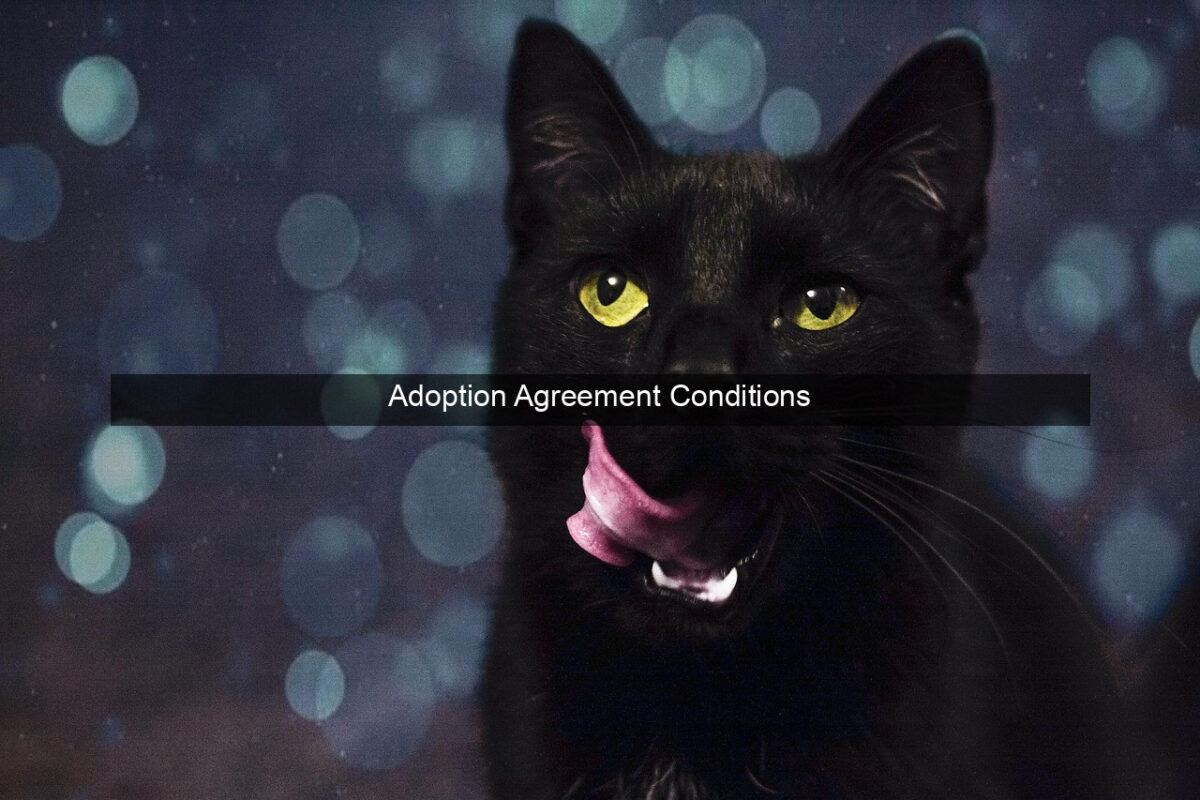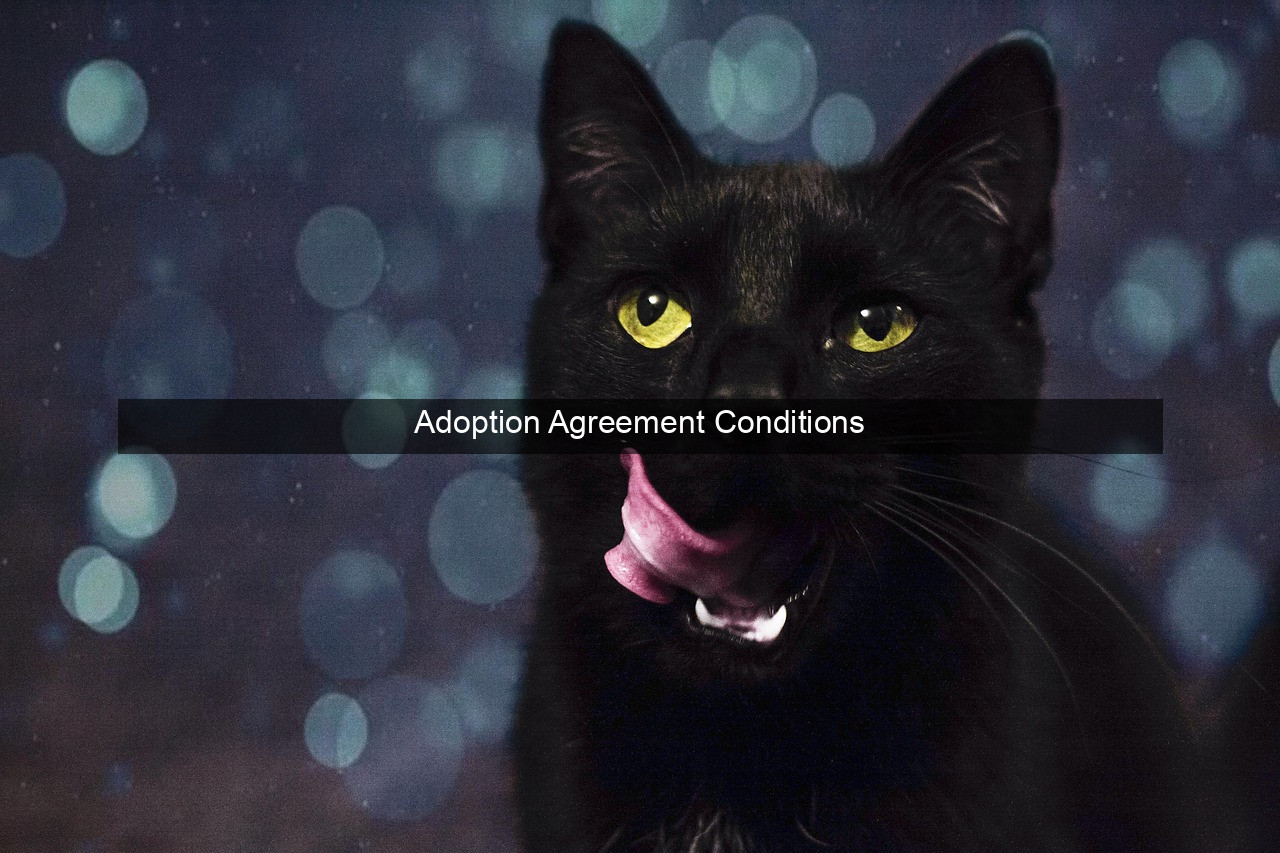Adoption Agreement Conditions

- Adoption Agreement Conditions
- Navigating the Complexities of Adoption Agreement Conditions
- Key Components of Adoption Agreements
- Consent and Relinquishment
- Financial Responsibilities
- Post-Adoption Contact and Communication
- Types of Adoption Agreements
- Agency Adoptions
- Independent Adoptions
- International Adoptions
- Conclusion

Navigating the Complexities of Adoption Agreement Conditions
Embarking on the journey of adoption is a profound and life-altering decision, filled with both immense joy and complex legal procedures. At the heart of this process lies the adoption agreement, a legally binding document that outlines the rights and responsibilities of all parties involved. This agreement, often intricate and nuanced, establishes the framework for the creation of a new family unit, ensuring the well-being and security of the child above all else. Understanding the various conditions stipulated within this agreement is paramount for both prospective adoptive parents and birth parents, providing clarity and fostering a smooth transition. This article delves into the crucial aspects of adoption agreement conditions, shedding light on their significance and providing a comprehensive overview of what they entail. From financial considerations to visitation arrangements, we will explore the key elements that shape these agreements, empowering individuals to navigate this process with confidence and understanding. This detailed exploration of adoption agreements aims to equip individuals with the knowledge necessary to make informed decisions, ultimately contributing to the successful and fulfilling creation of loving, forever families.

Key Components of Adoption Agreements
Consent and Relinquishment
One of the most fundamental aspects of any adoption agreement is the free, voluntary, and informed consent of the birth parents. This signifies their willing relinquishment of parental rights and responsibilities, allowing the adoptive parents to legally assume these roles. The agreement must clearly state that the birth parents understand the implications of their decision and that it is irreversible, except under extraordinary circumstances defined by law.
Ensuring the birth parents have received adequate counseling and legal advice is crucial to the validity of the consent. This support helps them process the emotional complexities of adoption and make informed choices aligned with their best interests and the child’s welfare. The agreement should also document the birth parents’ medical history, including any genetic predispositions or hereditary conditions, to inform the adoptive parents about potential health concerns for the child.
Furthermore, the timing of consent can vary depending on the jurisdiction and specific circumstances. In some cases, the birth mother may not be able to legally consent until after the child’s birth, providing a period for reflection and ensuring her decision is not made under duress.
Financial Responsibilities
Adoption agreements often outline the financial responsibilities of both the adoptive parents and, in some instances, the birth parents. These may include medical expenses related to the pregnancy and birth, legal fees associated with the adoption process, and, in certain situations, living expenses for the birth mother. The agreement should clearly delineate which party is responsible for each expense and establish a transparent payment process.
Transparency in financial matters is crucial to prevent misunderstandings and potential legal disputes. All financial arrangements should be documented meticulously within the agreement, ensuring all parties are aware of their obligations. It’s essential to note that paying the birth mother beyond legitimate expenses related to the adoption can be illegal in some jurisdictions, as it could be construed as coercion or inducement.
Adoptive parents should be prepared for the various costs associated with the adoption process, which can vary significantly depending on the type of adoption and the agency or attorney involved. Understanding these potential expenses upfront allows for better financial planning and prevents unforeseen financial burdens.
Post-Adoption Contact and Communication
Adoption agreement conditions frequently address post-adoption contact and communication between the adoptive family and the birth parents. These arrangements can range from closed adoptions with no contact to open adoptions with ongoing communication and even visitation. The specific terms are typically outlined in the agreement, reflecting the desires and needs of all parties involved, especially the child’s best interests.
Open adoptions are becoming increasingly common, recognizing the potential benefits for the child in maintaining a connection with their biological roots. This can involve exchanging letters, photographs, or even planned visits, fostering a sense of continuity and identity for the adopted child. However, the level and frequency of contact should be carefully considered and documented within the agreement to ensure clarity and avoid potential conflicts.
Even in closed adoptions, provisions can be made for the future release of identifying information when the child reaches a certain age, empowering them to seek out their birth family if they choose. The adoption agreement should address these possibilities, providing a framework for future contact while respecting the privacy and wishes of all parties.
Types of Adoption Agreements
Agency Adoptions
Agency adoptions involve licensed adoption agencies that facilitate the entire process, from matching prospective adoptive parents with birth parents to handling the legal paperwork and ensuring compliance with all regulations. These agencies provide support and guidance to both parties, navigating the complexities of the adoption process and ensuring the child’s best interests are prioritized.
Adoption agreement conditions within agency adoptions typically adhere to the agency’s established procedures and policies, offering a structured and regulated approach to the process. The agency acts as an intermediary, facilitating communication and ensuring all legal requirements are met. They also conduct thorough home studies of prospective adoptive parents to assess their suitability and preparedness for adoption.
Working with a reputable agency provides a level of security and oversight, ensuring the adoption process is conducted ethically and legally. However, agency adoptions can often be more expensive and may involve longer waiting periods compared to other types of adoption.
Independent Adoptions
Independent adoptions, also known as private adoptions, occur when the birth parents and adoptive parents connect directly, often with the assistance of an attorney or facilitator. This approach can offer greater flexibility and potentially faster timelines compared to agency adoptions. However, it also requires more direct communication and negotiation between the parties.
Adoption agreement conditions in independent adoptions are more customizable, allowing the parties to tailor the terms to their specific needs and preferences. This can be advantageous in creating a personalized agreement that reflects the unique circumstances of the adoption. However, it also requires careful legal counsel to ensure the agreement is legally sound and protects the rights of all involved.
Independent adoptions require a higher level of proactive involvement from both the birth parents and adoptive parents, including arranging legal representation, coordinating medical care, and navigating the legal procedures. While offering greater control over the process, it also necessitates a greater understanding of the legal and ethical considerations involved.
International Adoptions
International adoptions involve adopting a child from another country and are governed by both the laws of the child’s country of origin and the adoptive parents’ country of residence. These adoptions are often complex and require navigating international legal frameworks and cultural differences.
Adoption agreement conditions in international adoptions can vary significantly depending on the countries involved. Prospective adoptive parents must adhere to the specific requirements and regulations of both countries, which may include residency requirements, home studies, and background checks. The agreement will typically outline the legal process for bringing the child into the adoptive parents’ country of residence.
International adoptions can be a lengthy and challenging process, requiring significant patience and persistence. Working with reputable international adoption agencies and seeking expert legal advice is essential to navigate the complexities and ensure the adoption is conducted ethically and in accordance with all applicable laws.
| Adoption Type | Process | Cost | Timeline |
|---|---|---|---|
| Agency Adoption | Facilitated by licensed agency | Higher | Longer |
| Independent Adoption | Direct connection between birth and adoptive parents | Moderate | Potentially faster |
| International Adoption | Involves adopting from another country | Highest | Longest |
- Agency adoptions offer a structured approach with agency support.
- Independent adoptions provide more flexibility and customization.
- International adoptions involve navigating international laws and regulations.
Conclusion
Navigating the intricacies of adoption agreement conditions is a crucial step in the adoption process. Understanding the various components, from consent and financial responsibilities to post-adoption contact arrangements, empowers both birth parents and adoptive parents to make informed decisions. By ensuring clarity and transparency in these agreements, we contribute to the creation of secure and loving families for children in need of permanent homes. Whether through agency, independent, or international adoptions, careful consideration of these conditions paves the way for successful and fulfilling adoptions, enriching the lives of all involved.
What are the main components of an adoption agreement?
Key components typically include consent of the birth parents, financial responsibilities, post-adoption contact arrangements, and details regarding the child’s medical history.
What is the difference between an open and closed adoption?
Open adoptions

